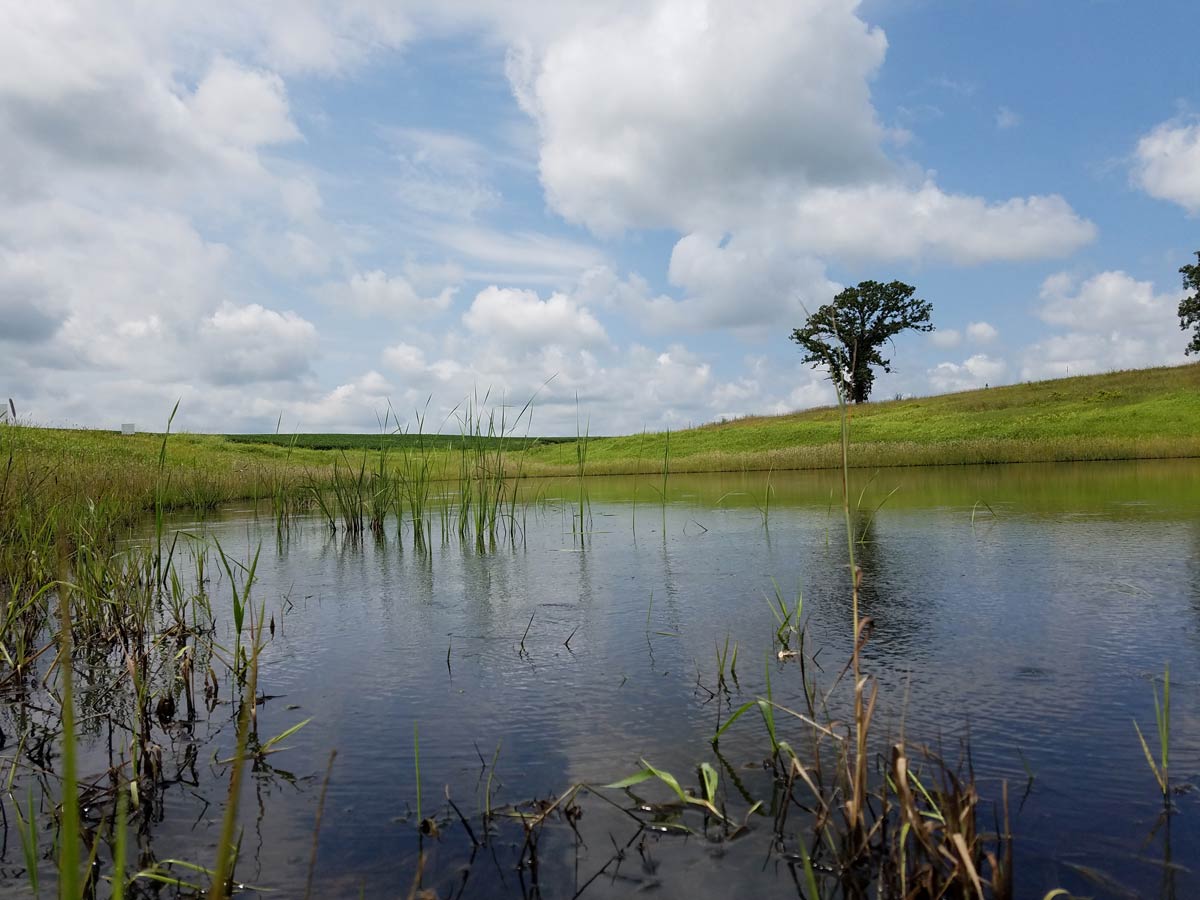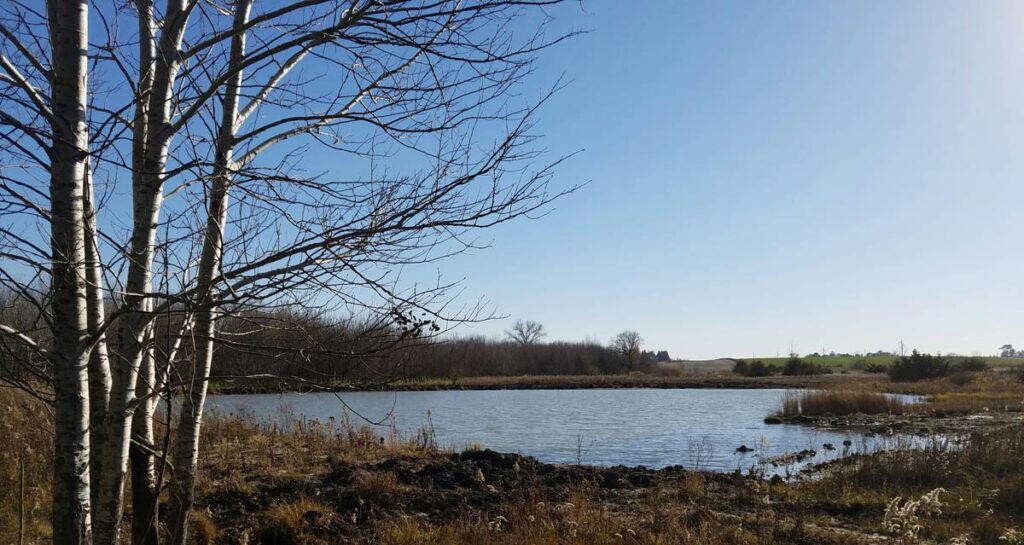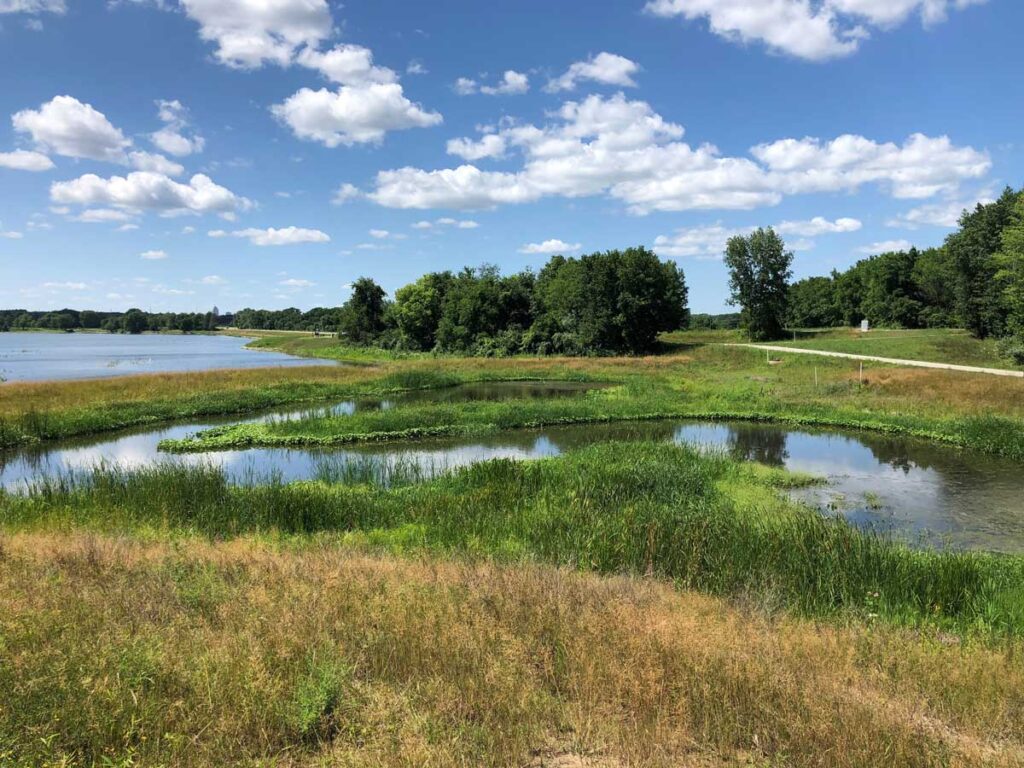Constructed wetlands are engineered systems designed to mimic natural wetland environments, providing effective stormwater management and water quality treatment. These carefully designed features use shallow pools, wetland vegetation, and specialized soils to capture runoff from urbanized areas and remove pollutants before water enters streams, rivers, or lakes. As stormwater flows into the wetland, multiple natural processes—including settling, filtration, and plant uptake—work together to remove sediment, nutrients, and other contaminants. Beyond their practical water management functions, constructed wetlands create valuable wildlife habitat, educational opportunities, and attractive landscape features that can enhance community green spaces.
The Iowa Department of Agriculture and Land Stewardship has excellent information regarding constructed wetlands. For success stories and more, visit the Clean Water Iowa website.
Key components
Forebay: An initial pool that captures sediment and debris from incoming stormwater, allowing for easier maintenance and preventing damage to the main wetland system.
Microtopography: A series of small berms and depressions that create a “stormwater maze,” forcing water to weave slowly through the wetland and maximizing contact time for pollutant removal.
Shallow water zones: Areas with varying depths (typically 3-18 inches) that support diverse wetland vegetation, promoting biological uptake of nutrients and pollutants.
Deep pools: Permanent water features (typically 18-48 inches deep) that reduce sediment suspension, provide cooling effects, and create aquatic habitat.
Outlet structure: Carefully designed to release water slowly, controlling flow rates to prevent downstream erosion and flooding while maintaining appropriate water levels within the wetland.



